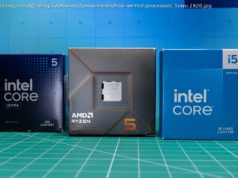Oculus head of hardware product management Sean Liu said the Quest was „indoor-only“ at the recent Oculus Connect 5 event.
The first thing I thought about when the Oculus Quest was officially announced at the recent Oculus Connect 5 is using the standalone wireless VR headset in a wide, open field outside. The idea of playing a free-roaming game by actually running around in a massive space sounds amazing. We did some light tests with the Lenovo Mirage Solo, but with “Rift quality experiences” and games like Superhot VR coming to Oculus Quest, in its a whole other category.
My excitement may have been a little premature, though. At OC5 we got the chance to speak with Sean Liu, Head of Hardware Product Management. We already talked to him about the Quest’s active cooling and launch lineup, so we asked him point blank: Can we use the Quest outside?
“It is indoor-only,” said Liu. “We have tried to make the rooms here at OC5 different to show a wide range of setups. So like Sports Scramble [also known as Tennis Scramble, it was referred to by both names] same are like living rooms, some are a wider open court space. The easiest way to think about this is the sensors are analogous to your eyes. So if you can read a book in an environment, you can probably also track. If things are lit up during the day time, you can probably track. It is indoor use only so there is no outdoor.”
Part of me thinks this statement should be followed up by an implied, “…according to official safety documentation at launch,” or something like that. They probably can’t legally recommend using Quest outside since it blocks your vision and it’d be a massive safety concern, but in terms of technology, there isn’t any practical reason it can’t work in the right conditions.
So, that’s what I asked: Is there a technical reason you’re saying it won’t work well outside?
“I personally have done lots of things with this headset. Let’s just leave it at that. But we are definitely planning for indoor-use only,” said Liu. “You can also think about outdoors on a bright day when you have to kind of squint to see or put on sunglasses, the sensors have a similar thing.”
We know that the Oculus Insight tracking technology uses four front-facing sensors on the face of the Quest headset (one in each corner) to scan your environment and create your VR space. But in order for it to work properly, there needs to be high contract preferably (that’s why the Dead and Buried Arena was full of black and white objects) and there need to be unique, identifiable objects to anchor the system — like walls ans furniture.
“Guardian has to be on whenever you’re playing with Oculus Quest,” said Allison Berliner, Product Marketing Manager at Oculus. “It’s because we think it’s the best way to ensure you’re gonna have a safer experience. We’ve made a lot of improvements to Guardian to make sure it still feels frictionless and free.”
So, for example, in the middle of an empty field outside on a bright, sunny day it might not work well. But if you’re in a small backyard or maybe a covered patio area it might. That’s just my personal conjecture at this point.
“Whenever you put on the headset and turn it on, you’ll notice an LED light will go on,” said Berliner. “That indicates the sensors are on and tracking, that means Insight is on. When that’s on it will recognize any previous Guardian system that you previously setup. That’s how we get multi-room support. It will recognize the room you’re in if it’s been saved.”
To be clear, the real benefit here is that you can use Quest in any room in your house — not just wherever your PC is located. That alone is a great feature. Being “restricted” to primarily indoor use is a little frustrating, but in the end it probably will work outside most of the time in the right scenario. And even when you are indoors, the trackable area is larger than Rift.
“We haven’t shared the exact details for the minimum and maximum, the easiest way to think about it is we do want to support seated, standing, and room-scale,” said Liu. “The room-scale size of Quest will exceed a lot of the room-scale specs that exist today.”






